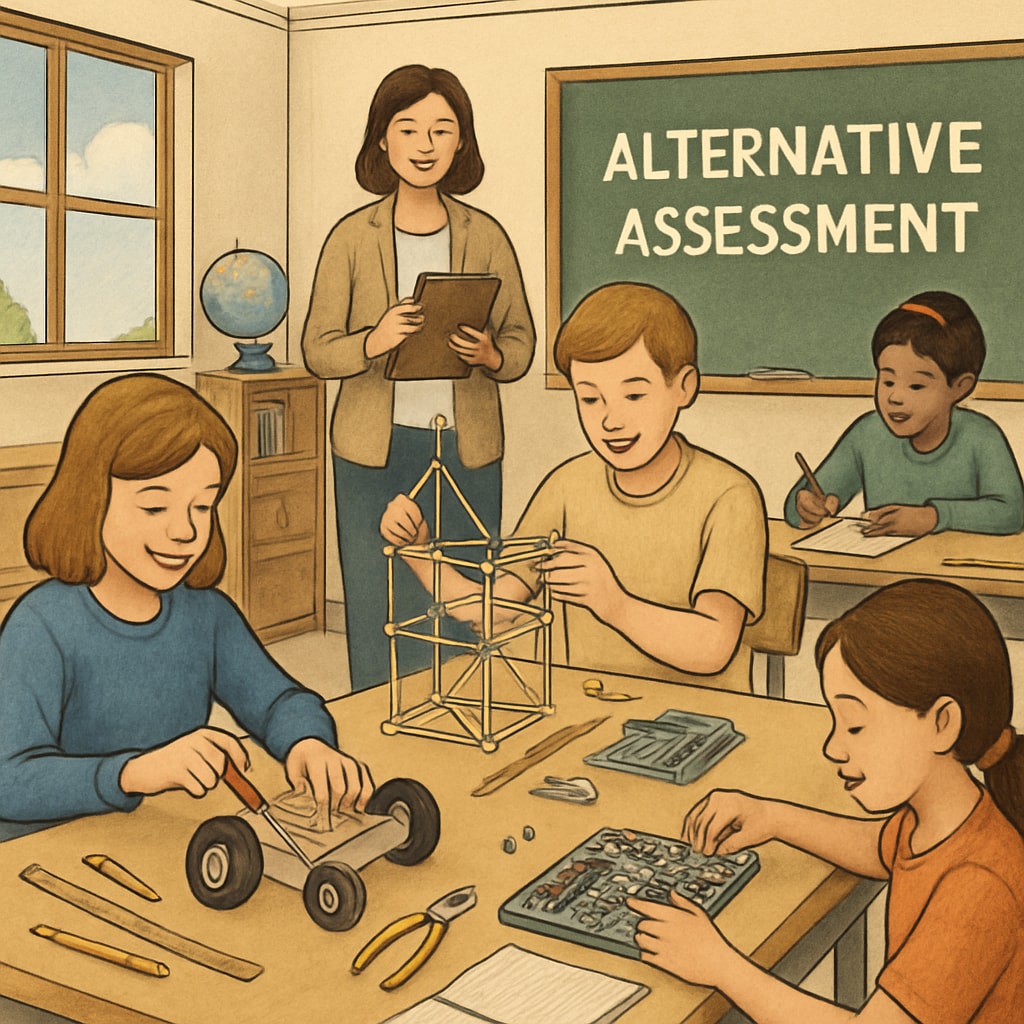Traditional grade-based assessments have long been the cornerstone of evaluating student performance in K12 education. However, the reliance on grades often overlooks deeper learning outcomes, nuanced growth trajectories, and real-time tracking of student progress. As educators increasingly recognize the limitations of grades, it is time to embrace more holistic and dynamic evaluation frameworks that better capture the diverse capabilities of learners.
The Limitations of Grade-Based Assessments
Grades offer a convenient, standardized way to assess student performance, but they come with significant drawbacks. For instance, grades often prioritize rote memorization over critical thinking and creativity. Furthermore, they fail to account for individual learning styles or the broader social and emotional development of students.
- Lack of depth: Grades rarely reflect the application of knowledge in real-world scenarios.
- One-size-fits-all approach: Standardized assessments ignore the diversity of student backgrounds and learning styles.
- Stress and pressure: Overemphasis on grades can lead to anxiety and discourage intrinsic motivation for learning.
To address these challenges, educators need to shift from grades to more comprehensive measures of academic and personal growth.

Dynamic Metrics for Learning Evaluation
Alternative assessment models are gaining traction as effective tools for evaluating student progress. These approaches focus on measuring skills, competencies, and personal development rather than simply assigning numerical or letter grades.
Some dynamic metrics to consider include:
- Portfolio Assessments: Students compile a collection of work that demonstrates their learning journey, creativity, and mastery of concepts.
- Performance-Based Assessments: Tasks such as presentations, experiments, and group projects allow students to showcase their understanding in practical contexts.
- Real-Time Progress Tracking: Digital tools enable teachers to monitor student progress continuously, offering insights into areas of strength and improvement.
- Peer and Self-Evaluations: Encouraging students to assess their own and peers’ work fosters critical thinking and accountability.
By leveraging these methods, educators can create a more personalized and engaging learning experience.

Why Holistic Evaluation Matters
Holistic evaluation methods go beyond academics to include emotional intelligence, teamwork, and problem-solving skills. These are essential attributes for success in the modern world, yet they are often neglected in traditional grading systems.
For example:
- Social-Emotional Learning (SEL): Measuring competencies like empathy and resilience provides insights into a student’s overall development.
- Collaboration Metrics: Group projects can assess interpersonal skills and collective problem-solving abilities.
- Growth Mindset Indicators: Tracking effort and perseverance helps evaluate a student’s adaptability and long-term potential.
Holistic evaluation ensures that students are not just academically prepared but also equipped with life skills that foster success beyond the classroom.
Steps Toward Implementing Alternative Evaluation Models
Transitioning to alternative evaluation methods requires a thoughtful approach. Educators, administrators, and policymakers must collaborate to design systems that are both effective and scalable.
Key steps include:
- Professional Development: Training teachers to use innovative assessment tools effectively.
- Integration of Technology: Leveraging platforms that facilitate real-time progress tracking and personalized feedback.
- Parent and Community Involvement: Educating stakeholders about the benefits of holistic evaluation models.
- Pilot Programs: Testing new methods in small-scale settings to refine and adapt them before full implementation.
By taking these steps, schools can ensure a smooth transition to a more inclusive and accurate evaluation system.
Conclusion: Grades have served as the default measure of student success for decades, but their limitations are increasingly apparent. By exploring alternative assessment methods—such as portfolio evaluations, performance tasks, and real-time tracking—educators can better capture the richness of student learning. Holistic evaluation not only aligns with modern educational goals but also equips students with the skills and adaptability needed for lifelong success.
Readability guidance: Use short paragraphs and lists to summarize key points. Incorporate transition words evenly throughout the text for flow. Ensure images complement the content and are placed strategically for clarity.


